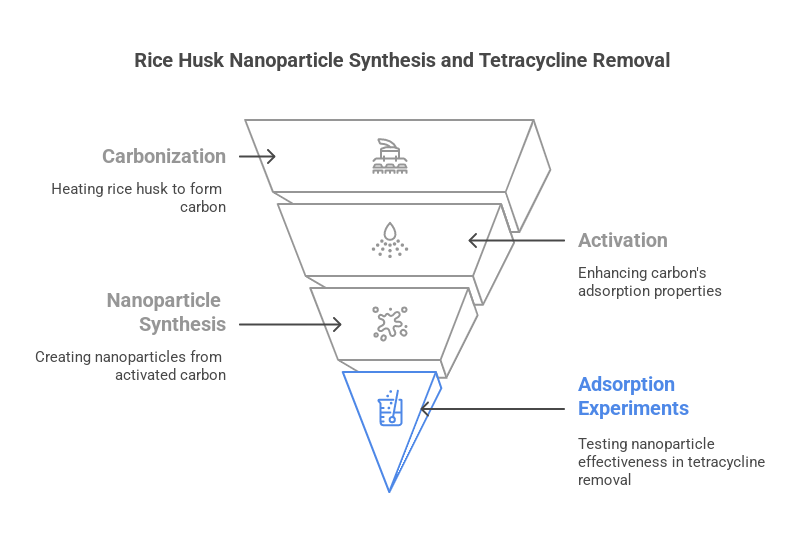Rice Husk Biomass-Derived Nanoparticles: A Green Strategy for Tetracycline Removal
Keywords:
Rice husk biomass, nanoparticles, tetracycline adsorption, Langmuir isotherm, green synthesis, wastewater treatmentAbstract
The abundant tetracycline in water bodies as a result agricultural and pharmaceutical activities presents significant health and environmental risks. This work investigates a green approach for treatment of tetracycline from aqueous solutions using rice husk biomass-derived nanoparticles. Rice husk was carbonized, activated, and further processed to synthesize nanoparticles, which were characterized using XRD, SEM, and FTIR. Batch adsorption experiments were conducted to evaluate the effects of pH, temperature, contact time, initial concentration, and adsorbent dosage on tetracycline removal. Results showed that adsorption was pH-dependent, with maximum efficiency (92%) at neutral pH. Adsorption followed the Langmuir isotherm model (R² = 0.98), suggesting monolayer adsorption, while kinetics were best described by the pseudo-second-order model (R² = 0.99), indicating chemisorption. Thermodynamic studies confirmed the spontaneity and endothermic nature of the process. The synthesized nanoparticles exhibited an adsorption capacity of 150 mg/g, surpassing conventional adsorbents such as activated biochar. The presence of functional groups such as hydroxyl (-OH) and carbonyl (C=O) contributed to strong adsorption interactions. While the high efficiency of rice husk nanoparticles makes them a promising eco-friendly adsorbent, the presence of heavy metals like lead in the synthesized material necessitates further refinement to ensure safe environmental applications. This study shows the potential of agricultural waste valorization in sustainable wastewater treatment and provides insights into optimizing green nanoparticle synthesis for enhanced pollutant removal.


